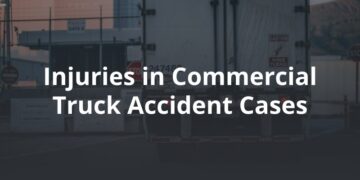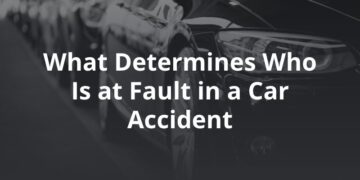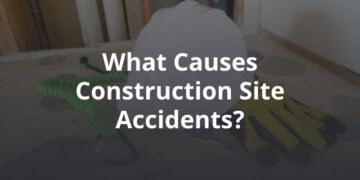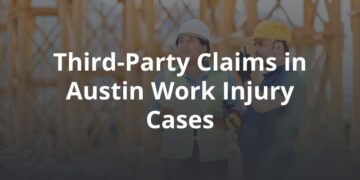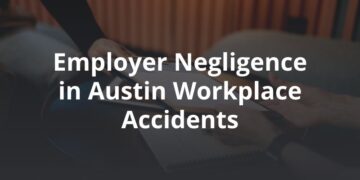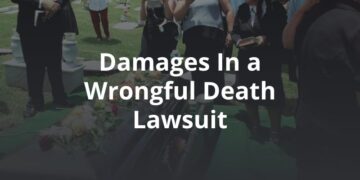Austin’s rise to becoming a global hub of tech, culture, and music is quite an accomplishment. However, even in a town that’s made its mark by setting its sights high — record-breaking heights, even — there is no pride in seeing higher pedestrian fatality numbers year after year. In 2019, Austin pedestrian deaths reached a four-year high. Two out of every five people killed on roadways were on foot. Unfortunately, that number has continued to rise. Data from 2021 show a continuing upward trend, with a 23% increase in pedestrian traffic fatalities from 2020 to 2021.
Even in non-fatal accidents, injuries can be life-changing, and recovering from them can be a confusing time. Most people do not live their lives preparing to file a personal injury lawsuit someday, but if you have been injured in a pedestrian accident, it’s important to understand your rights and options.
What Are the Most Common Pedestrian Accident Injuries?
- Concussions and traumatic brain injuries. Being hit by a car while on foot can cause a concussion, a brain injury that is generally considered mild. Concussions can have lingering effects, however, and if properly diagnosed and treated, they can result in more serious injuries. In severe head injuries, such as traumatic brain injuries (TBIs), pedestrians hit by a car may experience brain damage, memory loss, and even potentially life-altering changes. Anyone involved in an accident should receive prompt medical screening for head or brain injuries.
- Back, neck, and spine injuries. Injury to the back and neck can be life-altering. Broken bones, soft tissue damage, and even paralysis can all result from a pedestrian being hit by a car. In some cases, spinal injuries require surgical intervention, and some may even have delayed symptoms. Back and spinal injuries can lead to lifelong pain, continued and worsening degeneration, and economic and quality of life consequences.
- Fractures and broken bones. One study of bicycle accident injuries reported that 73 percent of bicyclists involved in a crash suffered fractures. Some minor broken bones can heal on their own with proper care, rest, and recovery, but others may be more complex and require surgical intervention. Fractures can also have more serious consequences, such as internal bleeding and even hemorrhagic shock.
- Abrasions, bruising, and contusions. Road rash and other abrasions are common in bicycle accidents. While this is often not as serious as other injuries, it is painful and can increase the risk of infection after an accident.
- Internal bleeding and other complications. In a bicycle accident, your organs can be seriously impacted by what is known as “trunk trauma,” causing them to bleed internally or stop functioning properly. You may need surgery to stop the bleeding and repair blood vessels and sometimes even remove the damaged organ surgically, such as in the case of a ruptured spleen.
- Emotional and mental injuries. Being in an accident can wreak havoc on a person’s emotional and mental state. Any accident brings trauma, and you may experience ongoing anxiety, mental anguish, sleeping issues, and avoidance of daily activities. Pedestrians experiencing these symptoms should understand the importance of therapy and treatment for their emotional and mental injuries in an effort to return to normal life.
Where Do Most Pedestrian Accidents Occur?
Proving liability in a pedestrian accident requires a thorough understanding of the traffic laws as well as the ability to dig in and deeply investigate each unique set of circumstances. According to a 2017 report from the National Highway Traffic Safety Administration (NHTSA), fatal pedestrian accidents that involved a motor vehicle could be classified according to their location:
- 73 percent occurred outside of a designated crosswalk or intersection, focused primarily on the street mid-block, highways or interstates, and rural roadways.
- 18 percent occurred in an intersection, with or without a marked crosswalk.
- 9 percent occurred in other areas, such as the shoulder of the road, parking lots, sidewalks or paths, bike lanes, and driveways.
While the majority of pedestrian accidents occur on the traveling lanes or sections of a roadway or an intersection, the 9 percent that don’t include a variety of locations that speak to different kinds of contributing factors. These include:
- Parking lots. The setup of a parking lot can be a factor in pedestrian accidents. When this occurs, the parking lot owner may bear some or all of the responsibility for the accident. Involving this third party — and proving their negligence — can add additional complexity and time to your case.
- Neglected maintenance. If neglected or faulty streets, sidewalks, signs, or control signals played a part in your accident, it may be necessary to involve the local transportation department, street or sidewalk owner, or other parties responsible for upkeep.
- Bike involvement. Cyclists and pedestrians often share crosswalks, sidewalks, and other spaces, so accidents can occur between these two without any involvement of a motor vehicle. However, a pedestrian injured by a bicyclist must still be able to prove that the rider neglected their duty of care — in other words, their responsibility to behave as one would expect any reasonable person to if driving a car.
- Bus involvement. Similarly, buses and pedestrians are often in close contact with one another. When a school bus, city bus, or other public bus service is involved in an accident, your case may be automatically more complicated since you may need to work with multiple parties and follow rigorous bureaucratic procedures to obtain information proving your case.
Most cities are so car-centric, and the rights and responsibilities of pedestrians may not be well understood or even known at all. People who have been injured in a pedestrian accident may not believe they have a chance when it comes to recovering damages — especially if their accident involves a car. However, the pedestrian accident attorneys at FVF have successfully represented Austin pedestrians and provided guidance to them as they make decisions about their recovery.
What’s the Process of Recovering Damages for Pedestrian Accident Injuries?
The first step in recovering damages is to consult with an experienced personal injury attorney who is not afraid to take your case to trial. Once you connect with the firm you choose, your initial consultation is a chance for the firm to get to know you, what happened to you, and what you are looking for by considering a pedestrian accident lawsuit.
If the attorney who reviews your situation believes you have a strong case, they will continue to investigate the circumstances so they can work to prove what caused the person or people who harmed you to act negligently or recklessly. They should dive as deep as needed to make sure all relevant factors are uncovered during this phase.
Some people worry about this level of scrutiny, but you do not have to be perfect to recover damages in a personal injury lawsuit, either. In Texas, you may recover damages in a personal injury claim as long as you are less than 50 percent responsible for your injuries. Some of the most common causes of pedestrian accidents are directly caused by automobile drivers. These include:
- Distracted driving
- Impaired drivers
- Impatient drivers
- Recklessness
- Bad weather
- Road construction
- Left turn
- Multi-lane roads
- Speeding
- Congested roadways
In cities like Austin, the roadways are often full of people using a variety of modes of transportation, which means everyone needs to be on high alert. The NHTSA estimates that only 5 percent of pedestrians struck by motor vehicles would die if the vehicle is traveling 20 miles per hour or less. While 5 percent is a lot of people, consider how that compares to reported fatality rates of 40, 80, and nearly 100 percent for striking speeds of 30, 40, and 50 miles per hour or more.
All drivers have an obligation to watch out for others on the road, including bicyclists, pedestrians, and other drivers. When they behave in a way that endangers others, people who have been injured often have a right to sue to recover damages.
Damages in a pedestrian accident lawsuit can include financial compensation for medical bills, lost wages, and even pain and suffering. If the driver has a history of causing injury to others or behaves in a particularly egregious way at the time of your accident, such as driving drunk, trial juries may award punitive damages. This is a way that your community can make a statement to punish the person who was responsible for your accident and, hopefully, prevent others from suffering the same way.
Drivers can reduce their risk to pedestrians by taking some simple steps:
- Look for pedestrians everywhere. Pedestrians may not be walking where they should be or may be hard to see — especially in poorly lit conditions, including dusk/dawn/night and poor weather.
- Always stop for pedestrians. This might be in the crosswalk or where pedestrian crosswalk signs are posted.
- Never pass vehicles stopped at a crosswalk. They may be stopped to allow pedestrians to cross the street.
- Slow down and look for pedestrians. Be prepared to stop when
- turning or otherwise entering a crosswalk.
- Never drive under the influence of alcohol or drugs. These can slow reaction times and impair your judgment.
- Follow the speed limit. Slow down around pedestrians, and don’t drive recklessly.
- Stay focused. Slow down where children may be present, like in school zones and neighborhoods.
How Can FVF Help?
FVF’s goal is to get to know you and understand more about what happened to you. We do this so we can provide you with the education and information you need to make the best decisions for yourself. We understand the ways that insurance companies and other parties try to avoid financial responsibility, especially when they believe the claimant is an easy target. Whether it’s using sneaky tactics or blaming you for your own injuries, when the case starts getting tough, we are not too busy or afraid to stick around to advocate for you.
FVF stands behind the idea that having a knowledgeable and experienced accident attorney by your side is essential, even if you are just trying to figure out whether you should accept the insurance company’s offer: they can help confirm that you are receiving necessary medical treatment, investigate the circumstances of your accident, and preserve and obtain the evidence that will be needed to build the strongest case possible should you suffer from some of these common injuries. A pedestrian hit by a car, motorcycle, or even a truck will likely need a lengthy rehabilitation time, and that can be expensive.
FVF’s attorneys have handled hundreds of injury cases over the years — you can expect to walk away from that first conversation feeling more educated about your situation. Our initial consultations are always free, always focused on educating you about your rights and options, and they are always without obligation to hire us. Together, we can discuss your options and help you decide how to move forward. If you’ve been injured in a pedestrian accident, contact us today to discuss your options and talk about how you can move forward.
